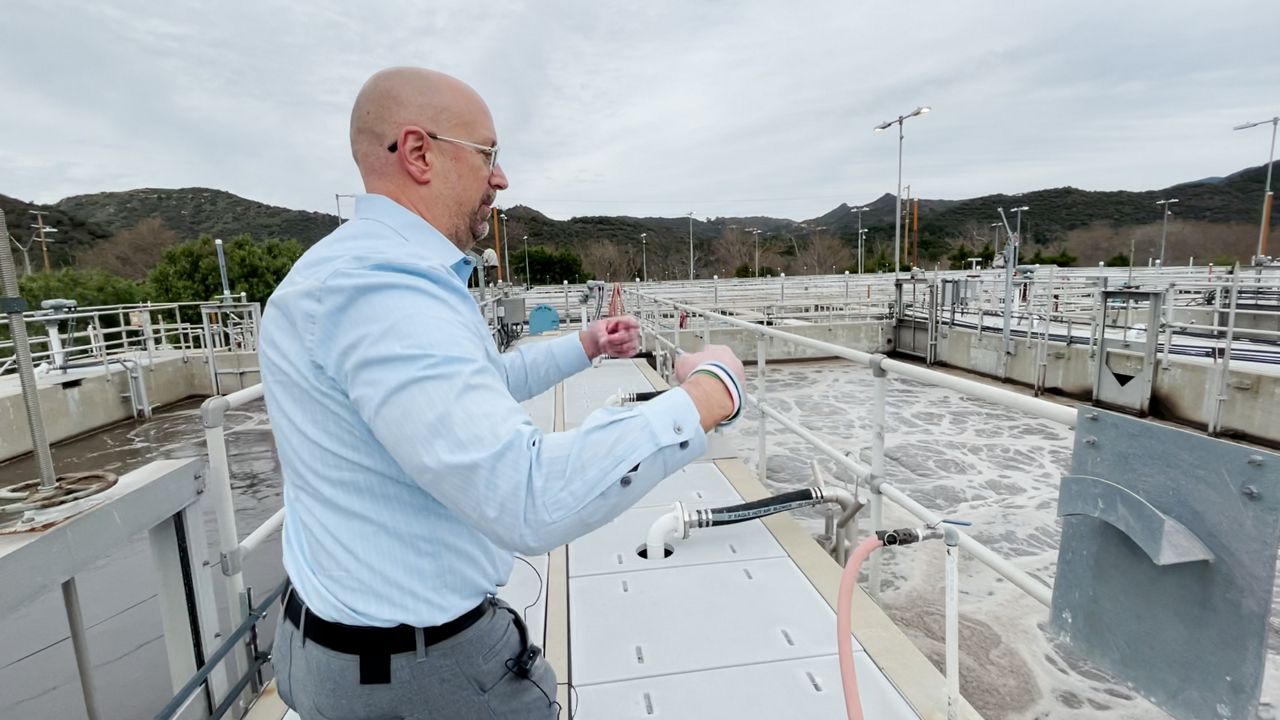It may not be the most pleasant thought, but the wastewater that flows through the Tapia Water Reclamation Facility in Agoura Hills could one day come out of your faucet.
"We’re taking the water that we would normally discharge into Malibu Creek and we’re going to create a local drinking supply out of this," said Michael McNutt with the Las Virgenes Municipal Water District.
It’s called the Pure Water Project and in a race against climate change, McNutt says the region must create additional sources for a clean water supply, one that is more resilient to drought. Currently, the district says it solely relies on the State Water Project.
“That means that our water comes over 400 miles through the California aqueduct to get to us. We have to rely on weather and weather patterns, snowpacks specifically for our water supply,” McNutt said.

Besides weather patterns and drought, the water agency says natural disasters such as earthquakes could also potentially cut the area off from its primary water source and McNutt says for them, groundwater isn’t really an option.
“The groundwater that we do have is contaminated with natural elements that you see from the mountains and the geography around us, so instead of pulling that out which is going to be very costly to do with minimum return, we had to start thinking on how to develop an additional water source,” he said. “If we do it locally, then it’s going to help us make sure that we’re less reliant on water from someplace else.”
To showcase the technology, the district has set up a $4 million demo facility on its campus to pilot the process and educate the public. Wastewater would be treated as usual, but instead of ending up in Malibu Creek, it would go through an additional three-step process — microfiltration, reverse osmosis, which removes pharmaceuticals, personal care products, as well as bacteria and viruses.
Then, it is treated with ultraviolet advanced oxidation. The agency says after that process; the water is so pure that it has to be sent to a local reservoir, where it mixes with state water for six months to remineralize, before being treated one last time and piped to homes and businesses.
“Once it goes through that entire process, the same water that you flush down your toilet or went down your sink is going to be used for drinking,” McNutt said.
And for those who still aren’t onboard with recycled water, he says think about it this way.
“Every single drop of water on the planet has been here since this planet was formed, which means that the water that we drink has been recycled for eons, over and over and over again,” he said.
Las Virgenes says recycled wastewater will eventually make up around 20% of the water for the district, which serves about 77,000 thirsty residents and businesses.
“There’s no choice in this. We have to create water and reliable water sources from somewhere and this is exactly what we’re going to be doing,” McNutt said.
In other words, for those on the front lines of California’s water woes, it’s a solution flush with possibilities.
Let "Inside the Issues" know your thoughts and watch Monday through Friday at 8 and 11 p.m. on Spectrum News 1.



